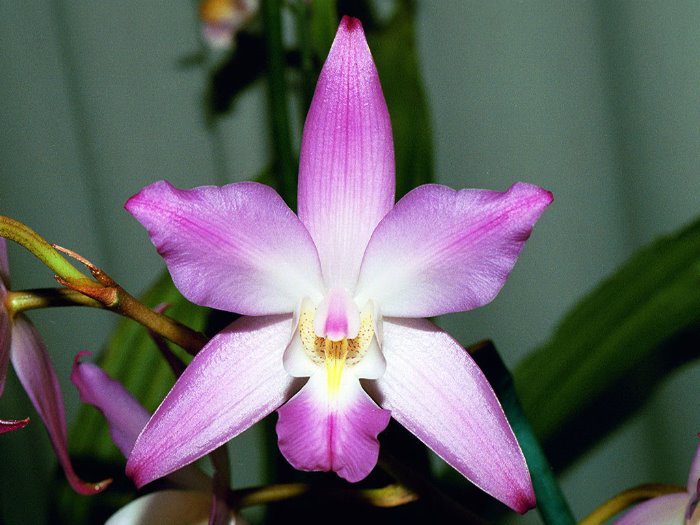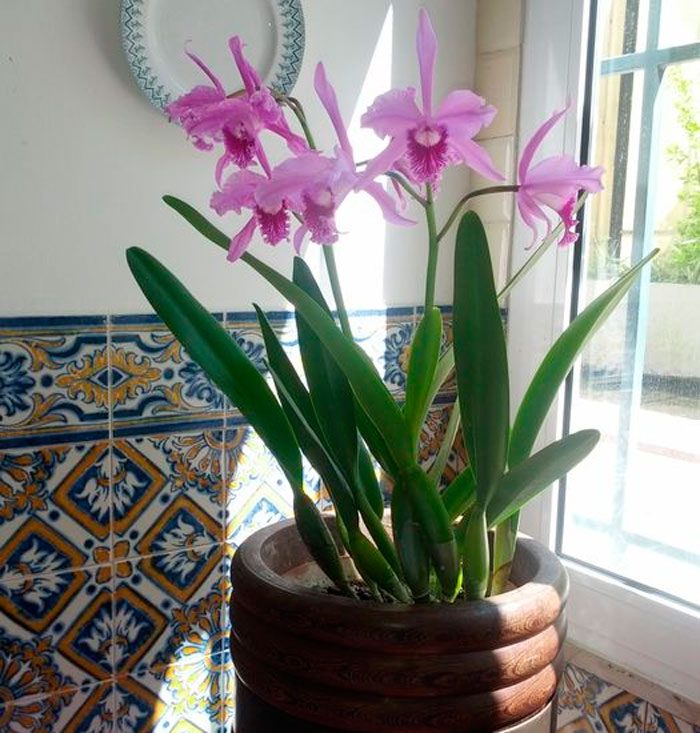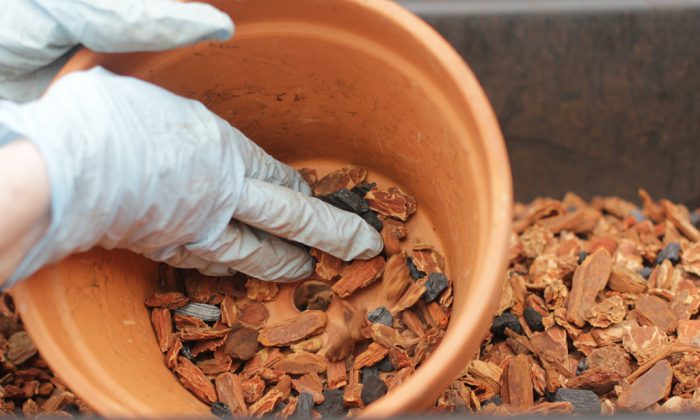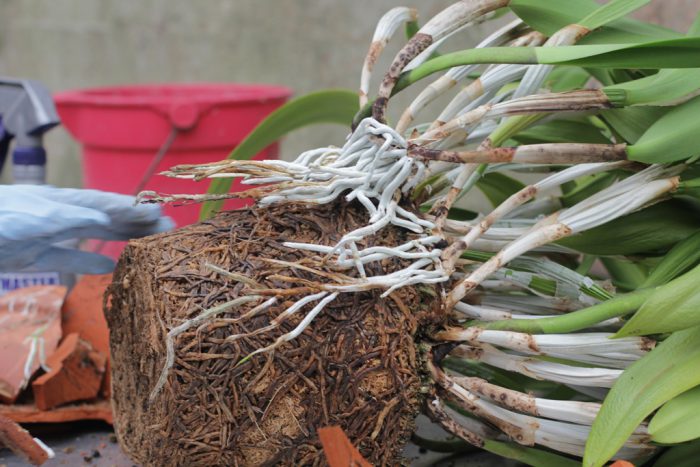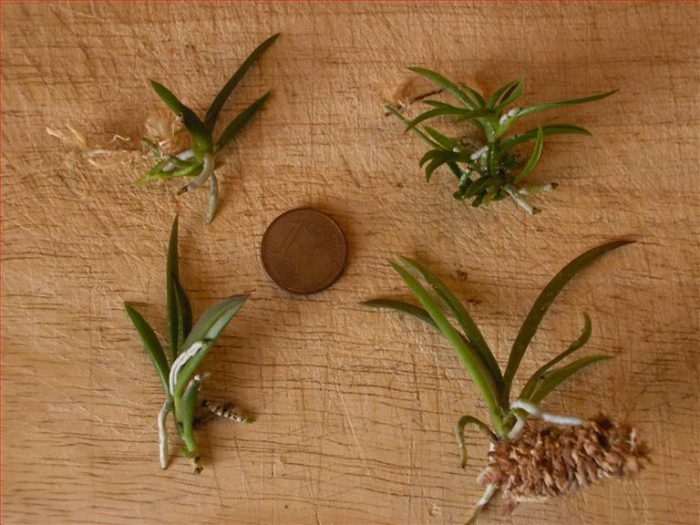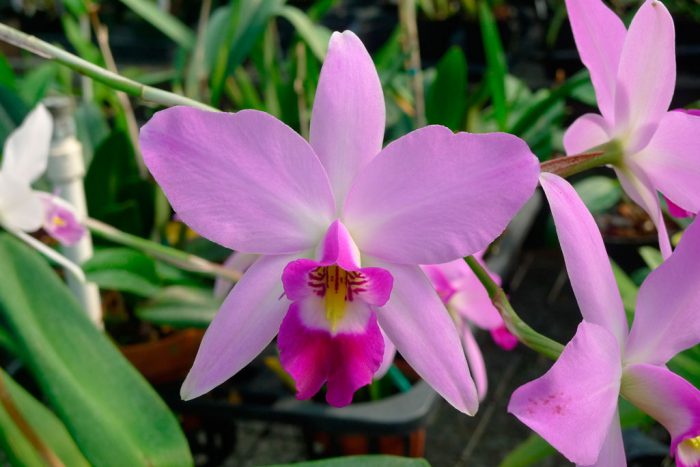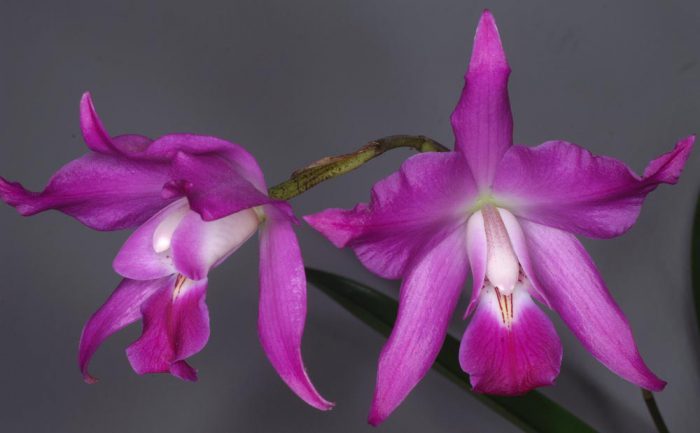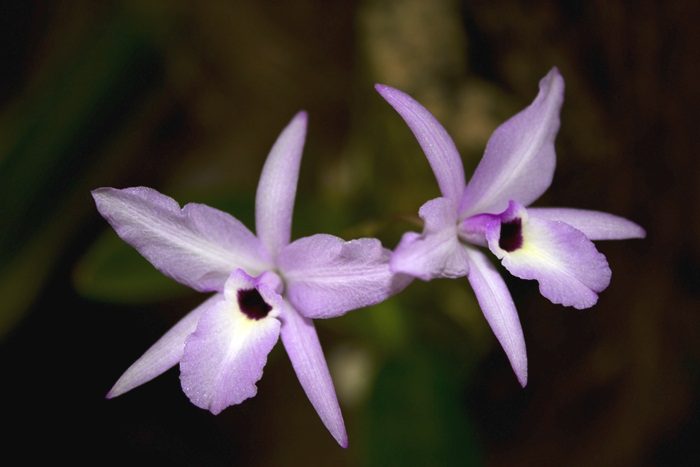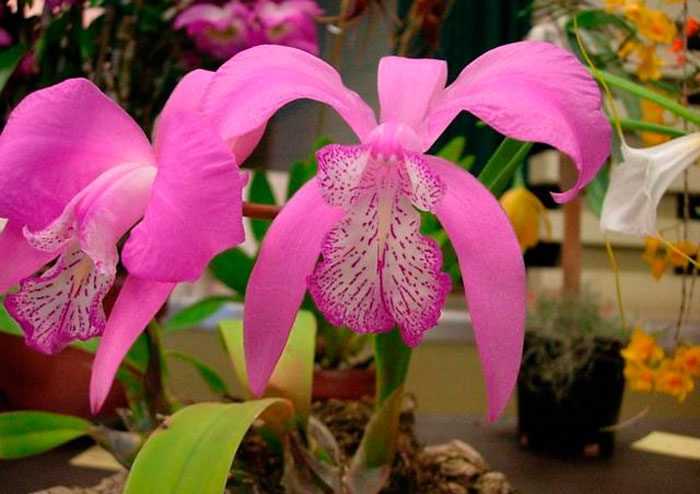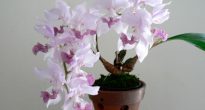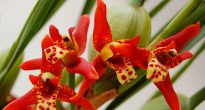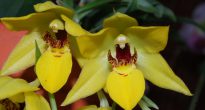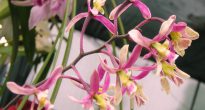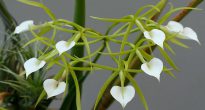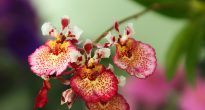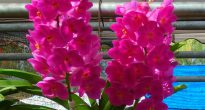Kind of like lelia (Laelia) is directly related to the orchid family. It unites 23 plant species. They are represented by perennial epiphytic and lithophytic plants. In natural conditions, they can be found in the subtropical and temperate regions of the West Indies and South America.
All species are characterized by a sympoidal growth pattern. Young shoots in certain species can develop at the base of the old one, while dense clumps with short creeping ground shoots (rhizomes) are formed, and in others, at some distance from it.
The flower itself can have different heights. So, it can be 1–2 centimeters or 30–60 centimeters. Single-leaved or double-leaved pseudobulbs can be ovoid or elongated-cylindrical. Young pseudobulbs are glossy, smooth and colored greenish-gray or green; as they grow, they become dull and wrinkled. Rigid thick vaginal leaves have an elongated-oval or belt-like shape, and they have pointed tips at the tip. The leaf blade is slightly folded along the central vein.
This kind of orchid blooms in central Russia in winter and spring, or rather from December to April. Unbranched apical peduncles have 1 flower or have few-flowered inflorescences in the form of a brush. Pronounced zygomorphic fragrant flowers are quite large (diameter from 15 to 20 centimeters). 2 petals (petals) and 3 sepals (sepals) are free, have a similar color, and also have a belt-like or narrow-oval shape. The petals are somewhat wider than the sepals, and their edges are slightly wavy. The third petal is called a lip, it can be three-lobed or solid, and also have a fringed or smooth edge. Growing together at the base, they form a rather long tube, while completely hiding the column (the reproductive organ of the flower).
Lelia care at home
It is quite difficult to care for such a plant, and it needs special conditions of detention. It is best suited for cultivation by experienced growers.
Illumination
A fairly light-loving plant that needs very bright lighting. For him, the direct rays of the morning or evening sun will be very useful. However, it is better to shade the lily from the scorching midday sunlight. Sunlight can be replaced with artificial light of equivalent brightness.At any time of the year, daylight hours must be at least 10 hours long.
Thanks to bright lighting, the correct growth of pseudobulbs occurs, the laying of flower buds and, as a result, prolonged flowering.
Temperature regime
This flower needs moderately cold temperatures. He needs quite noticeable changes in daily temperatures. So, it is best if in the daytime it will be from 18 to 25 degrees, and at night - from 13 to 19 degrees. It should be noted that the temperature difference between day and night should be at least 5 degrees.
Experienced growers recommend moving the plant to fresh air, where it can stay from mid-May to mid-September. In this case, there is a natural drop in daily temperatures, as well as the required degree of illumination. It should be noted that on the street such an orchid can withstand high daytime temperatures (up to 32 degrees).
During the dormant period, the plant should be placed in a bright and fairly cool place with a daytime temperature of about 15 degrees, and a nighttime temperature of 10 degrees.
This period, as a rule, is observed in autumn – winter, but at the same time it can be at other times. The beginning of the dormant period is when a young pseudobulb develops and the leaf unfolds by ½ part, and the end - after the formation of a peduncle.
Earth mixture
Such a flower can be grown in blocks or in pots filled with small pieces of pine bark mixed with sphagnum.
It is best to use a transparent pot made specifically for orchids. It transmits well the light necessary for the root system, and also very well allows air to pass through thanks to the larger drainage holes.
A large piece of pine bark can be used as a block; it must be pre-processed by removing dirt and resin. On the surface of the bar, you need to fix the roots of the flower, while covering them with a not very thick layer of sphagnum. Moss retains moisture, preventing the roots from drying out.
How to water
Watering is different for different growing methods. If Lelia grows in a pot, then watering is done after the substrate is completely dry. To determine the state of the bark in a pot, you can simply look through the transparent wall. When growing on a block on hot days, daily watering is required, and on cool days - once every 2 days.
Watering is carried out with water at room temperature, necessarily soft (filtered, rain or thawed). To soften, you can use a little citric acid or a drop of vinegar (the water should not have a sour taste).
It is recommended to water the orchid by completely submerging it in water for a third of an hour. You can submerge the entire plant along with the foliage.
Humidity
The optimum air humidity is 75–85 percent. Even very frequent humidification from a sprayer is not able to provide the required level of humidity, so it is recommended to grow the flower in orchidariums with a specially selected climate or use a household air humidifier.
Transplant features
Transplant the flower only if necessary. For example, when the substrate rots, sour, decomposes or becomes very dense, as well as if the roots no longer fit in the pot or the block becomes too tight.
It is best to transplant lelias during the growth of new roots.
Fertilizer
Top dressing is carried out once every 2-3 weeks. To do this, use a special fertilizer for orchids (1/2 of the recommended dose on the package). It is recommended to feed by foliar and root methods (alternating them), while fertilizers must be dissolved in water for irrigation or for spraying.
Reproduction methods
It can be propagated in room conditions exclusively in a vegetative way. At the same time, it is necessary to divide the rhizomes of a large bush into parts so that each delenka has at least 3 mature pseudobulbs.
Seed and meristem propagation is used only in industrial conditions.
Pests and diseases
Resistant to pests.
It is extremely rare to become infected with viral diseases.Most often, due to violations of the rules of care, fungal diseases develop. This can be facilitated by improper temperature conditions, improper watering, intense or poor lighting, hard or cool water, damage to the root system during transplantation, and so on.
Main types
For indoor cultivation, only a few species and many of their hybrids are used.
Lelia double-edged (Laelia anceps)
This epiphytic plant is native to the humid forests of Honduras, Mexico and Guatemala. Single-leaved, oval-shaped pseudobulbs reach 2–3 centimeters wide and 6–10 centimeters high. Rhizome long enough. The formation of young stems occurs at a distance of 3 to 5 centimeters from each other. The leaves are 10–20 centimeters long and about 4 centimeters wide. The length of the peduncle can be 100 centimeters, while up to 5 large flowers are placed on it (up to 12 centimeters in diameter). Lanceolate petals and sepals are slightly curved back and have slightly wavy edges. Sepals are 4–6 centimeters long and 1–1.5 centimeters wide. The petals are somewhat longer, and their width is 1.5-3 centimeters, and the length is from 5 to 7 centimeters. The large three-lobed lip, forming a rather wide funnel, has a size of 4.5 by 3.5 centimeters. The elongated central part of the lip is oval, wavy and curved downward. Typically, the flower has the following color: lavender petals and sepals and a purple lip. The funnel inside, as well as its open pharynx, are yellowish, and have streaks of dark purple color.
Lelia Gouldiana
The homeland of this epiphyte is Mexico, but it is impossible to meet it in natural conditions at the moment. Two-leaved, less often three-leafed pseudobulbs are fusiform and have 4 mildly pronounced edges. They can be 4–15 centimeters high and 1.5–3 centimeters wide. The width of the leaves is 3 centimeters, and their length is from 15 to 25 centimeters. Long (height 40-80 centimeters) peduncle bears from 3 to 10 flowers, the diameter of which is approximately 8 centimeters. Narrow sepals, lanceolate, reach 1–2 centimeters wide, and 5–6 centimeters long. Diamond-shaped wide petals with wavy edges are 5-6 centimeters high and 2 to 3 centimeters wide. The length of the three-lobed lip is from 3 to 5 centimeters, and the width is 2–2.5 centimeters. The straight, vertically positioned lateral parts do not fuse into the tube, while the deep rectangular-oval anterior part is similar to the scapula and has wavy edges. The entire calyx is painted purple, while the color is darker at the tips of the petals, sepals and lips, and closer to the base it turns into almost white.
Lelia reddening (Laelia rubescens)
This lithophyte or epiphyte can be found in almost any part of Central America. Oval single-leaved, sometimes double-leaved pseudobulbs slightly flattened laterally. Their width is from 1.5 to 4 centimeters, and their height is 4–7 centimeters. Narrow elliptical, three-centimeter wide, leaflets have a rounded tip and a length of 10-15 centimeters. Multi-flowered flower stalks can reach 15–80 centimeters in height, and they bear up to 15 medium-sized flowers (diameter from 3 to 7 centimeters). Pointed sepals have a belt-like shape, reach 2–4.5 centimeters in length and 0.5–1 centimeters in width. Rhomboid petals with wavy edges are 2.5–4 centimeters long and 1–2 centimeters wide. The triple lip is 1.5–2.5 centimeters wide and 2–4 centimeters long. A tube is formed from the lateral parts, and the free, front part is bent downward with its long oval tongue and with a wavy edge. As a rule, the flower is painted in a light purple or light pink color, inside the tube, as well as the pharynx are painted in a dark purple shade, and in the central part of the lip there is a yellowish speck.
Lelia magnificent (Laelia speciosa)
This epiphyte is endemic to Mexico. Single-leaved or double-leaved ovoid pseudobulbs reach a height of about 5 centimeters. The width of the leaves is from 2 to 3 centimeters, and their height is 13–15 centimeters. Short stalks, as a rule, are no higher than 20 centimeters.Paired or single flowers are quite large, their diameter is from 10 to 15 centimeters. Sepals have a belt-like or elongated-oval shape, and pointed petals are rounded-rhomboid. The flowers can be colored in various shades from pink to lilac. There are also representatives with snow-white flowers. The lip is three-bladed. The lateral parts, accreted by 2/3 of their length, form a tube with inverted edges. The fan-shaped or spatulate central part is wavy. The tube inside, as well as the lip, are white in color, with strokes of a lilac shade on them, and there is also an edge of the same color.

